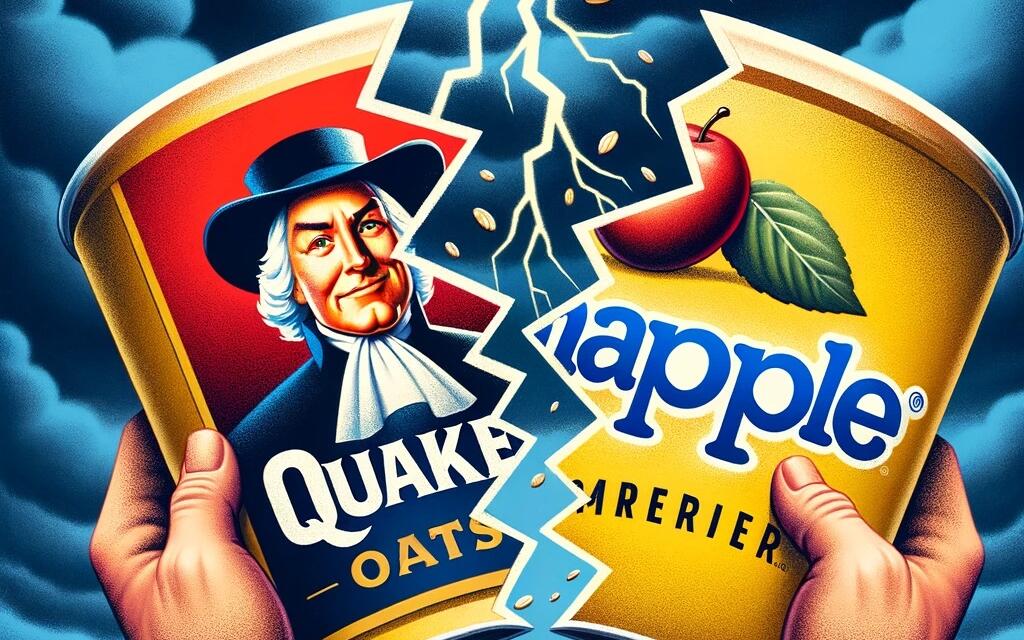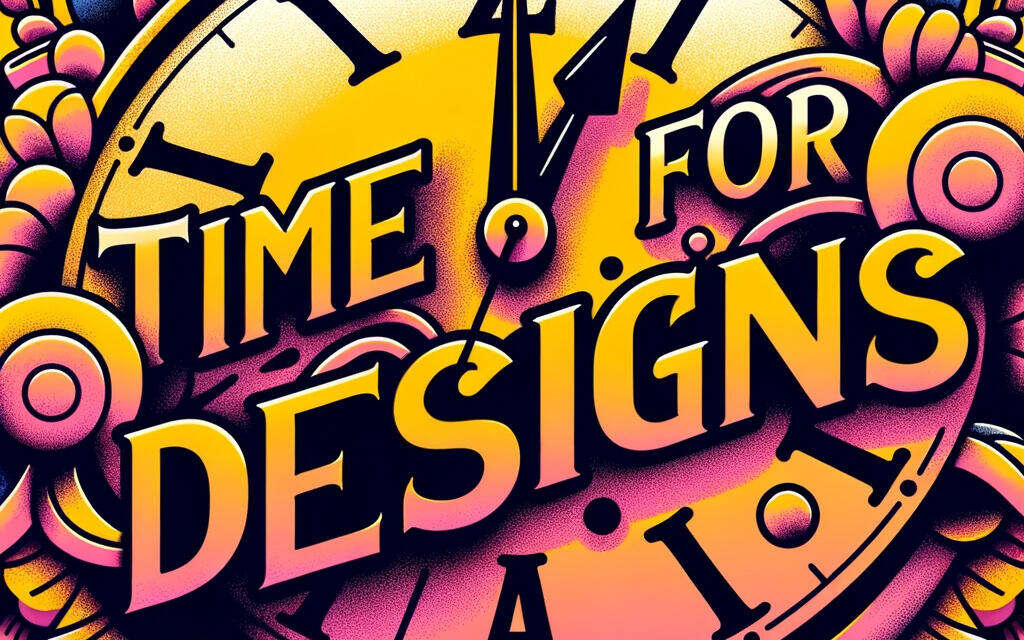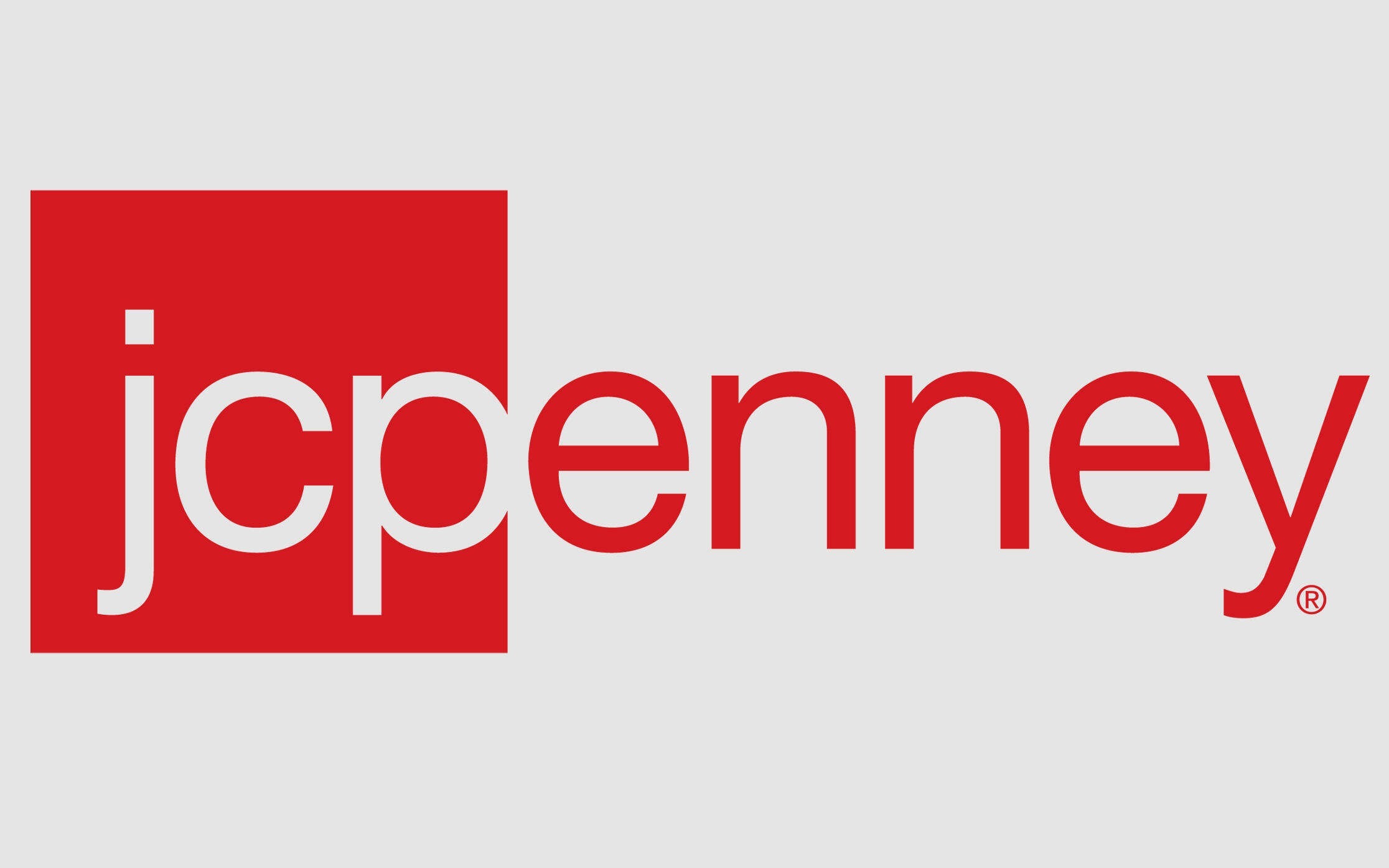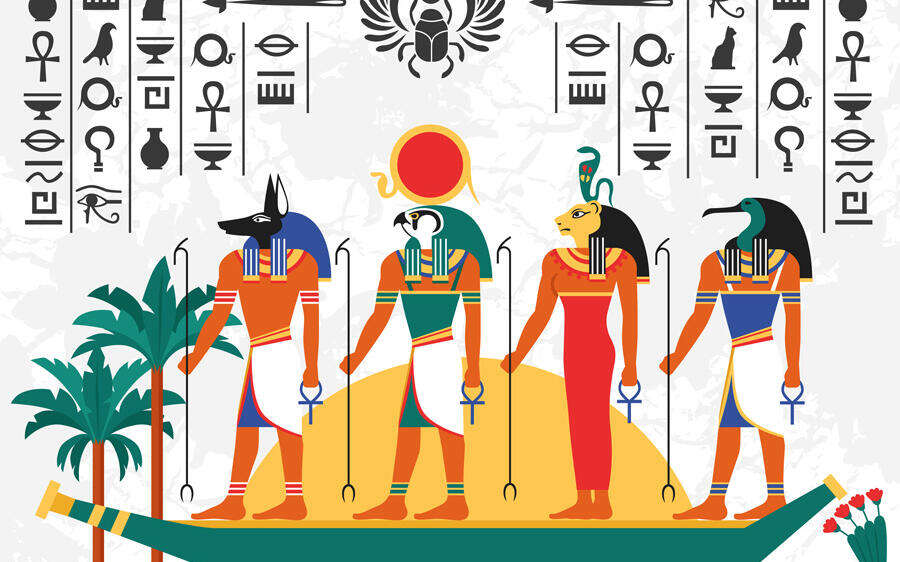A Tale of Brand Misunderstanding and Business Blunders
Welcome back to our blog, where we delve into the intriguing world of business, marketing, and all things creative. Today, we've got a real treat for you—a story that's as riveting as a blockbuster movie, yet packed with lessons that could fill an entire semester at a business school. We're talking about none other than the infamous Quaker Oats-Snapple acquisition. Trust us, this one's a doozy!
The Players Involved
First off, let's introduce the key players in this drama. On one side, we have Quaker Oats, a household name synonymous with wholesome breakfast options and family values. On the other, we have Snapple, a brand that's as quirky as its name suggests, known for its eclectic range of beverages and off-the-wall marketing campaigns.
A Seemingly Perfect Match
Now, you might be wondering, what could possibly go wrong? Quaker Oats had already hit a home run with its acquisition of Gatorade, turning it into a billion-dollar brand. Snapple, with its unique flavours and burgeoning market presence, seemed like the next logical step in Quaker Oats' beverage empire expansion. It was as if the stars had aligned, setting the stage for what should have been a match made in corporate heaven.
A Cautionary Tale in the Making
But here's where the plot thickens. This isn't just a story of numbers, spreadsheets, and profit margins. No, this is a tale that delves deep into the complexities of brand identity, consumer perception, and corporate culture. It's a narrative that exposes the pitfalls of misunderstanding what a brand stands for and how that can lead to a disastrous outcome.
Why You Should Stick Around
So why should you care about an acquisition that happened years ago? Because this story serves as a timeless lesson for entrepreneurs, marketers, and business leaders alike. It's a cautionary tale that highlights the importance of truly understanding a brand before making grand moves like an acquisition. It's a case study that shows how even the giants can stumble when they underestimate the intricacies of brand identity and consumer loyalty.
A Fascinating Journey Awaits
So, buckle up, dear readers, as we dissect this fascinating case study, piece by piece. We'll delve into the decisions that led to the acquisition, the blunders that followed, and the aftermath that left the business world stunned. Along the way, we'll extract valuable lessons that you can apply in your own ventures, ensuring you don't fall into the same traps.
Quaker Oats and Snapple, A Tale of Two Brands
Alright, let's get down to the nitty-gritty and set the stage for this epic tale of business ambition and brand misunderstanding. Before we can fully appreciate the rollercoaster that was the Quaker Oats-Snapple acquisition, it's crucial to understand the DNA of the two companies involved. On paper, this seemed like a match made in heaven, but as we'll see, the devil is in the details.
Quaker Oats: The Wholesome Giant
Let's start with Quaker Oats, a brand that's been around since the late 1800s. Known for its iconic Quaker Man logo and wholesome breakfast cereals like oatmeal, this company has been a staple in American households for generations. But Quaker Oats wasn't just about oats; they had diversified into other food products and even made a splash in the beverage market with their acquisition of Gatorade in the 1980s. This move was a grand slam, turning Gatorade into a billion-dollar brand and making Quaker Oats a major player in the beverage industry.
Snapple: The Quirky Upstart
Now, let's talk about Snapple. Founded in the 1970s, Snapple was the antithesis of corporate. With its quirky marketing campaigns, unique flavours like "Kiwi Strawberry" and "Mango Madness," and a grassroots approach to distribution, Snapple had carved out a niche for itself. It was the beverage of choice for those who wanted something different, something that stood out from the sea of colas and traditional fruit juices. Snapple was not just a drink; it was a statement.
The Attraction: Synergy or Mirage?
So, why did Quaker Oats set its sights on Snapple? On the surface, it seemed like a logical move. Quaker Oats had the distribution channels and the marketing muscle, while Snapple had the innovative products and a loyal customer base. It looked like a perfect synergy, a way to create a beverage empire that could rival the likes of Coca-Cola and Pepsi.
The Warning Signs: Ignored or Unseen?
However, there were warning signs that this was not a match made in corporate heaven. Quaker Oats was a company steeped in tradition, with a top-down corporate culture. Snapple, on the other hand, was a rebel, a brand that thrived on its outsider status. The two companies had fundamentally different approaches to business, marketing, and customer engagement. But these nuances were either ignored or not fully understood, setting the stage for what would become one of the most infamous acquisitions in business history.
Why Quaker Oats Wanted Snapple and Where It All Went Wrong
Now that we've set the stage with the backgrounds of Quaker Oats and Snapple, it's time to delve into the heart of the matter—the attraction that led Quaker Oats to set its sights on Snapple. On the surface, it seemed like a strategic move, but as we'll see, this is where the plot starts to twist and turn.
Striking Gold with Gatorade: Quaker Oats' Previous Triumph
First, let's rewind a bit and talk about Quaker Oats' previous acquisition success—Gatorade. When Quaker Oats acquired Gatorade in the 1980s, they transformed it from a niche sports drink into a billion-dollar global brand. This was a textbook example of a successful acquisition. Quaker Oats leveraged its extensive distribution network, marketing prowess, and corporate resources to take Gatorade to new heights. It was a win-win situation that had Quaker Oats hungry for more.
The Allure of Snapple: A Seemingly Perfect Candidate
Enter Snapple. With its unique flavours like "Peach Tea" and "Raspberry Royale," and its offbeat marketing campaigns featuring the famous "Snapple Lady," the brand had carved out a unique space in the beverage market. It was different, it was exciting, and it had a cult following. For Quaker Oats, Snapple seemed like the perfect candidate to replicate the Gatorade success story. The allure was too strong to resist.
The Strategic Vision: Building a Beverage Empire
Quaker Oats envisioned a beverage empire where Gatorade would be the go-to drink for athletes, and Snapple would cater to the lifestyle and wellness crowd. The idea was to create a portfolio of beverages that would cover multiple market segments, from sports to casual sipping. On paper, this strategy looked foolproof.
The Fatal Flaw: Underestimating Brand Essence
But here's where things started to go south. Quaker Oats underestimated the essence of Snapple's brand. Snapple wasn't just about unique flavours and quirky marketing; it was about being an alternative, a choice for those who rejected mainstream options. Its grassroots distribution through small retailers and its irreverent tone were integral to its identity. Quaker Oats, with its corporate structure and mainstream marketing tactics, was ill-suited to preserve what made Snapple special.
The Ignored Red Flags: A Recipe for Disaster
There were red flags, of course. The cultural differences, the contrasting marketing philosophies, and the divergent brand identities were all there, staring Quaker Oats in the face. But in the excitement of potential growth and market domination, these warning signs were either ignored or not fully comprehended.
Snapple's Brand Identity and Quaker Oats' Fatal Oversight
We've talked about the backgrounds of Quaker Oats and Snapple, and we've delved into why Quaker Oats was so smitten with the quirky beverage brand. Now, it's time to get to the crux of the matter—the monumental misunderstanding of Snapple's brand identity by Quaker Oats. This is where the story takes a dark turn, so brace yourselves.
The Essence of Snapple: Unconventional and Grassroots
First, let's talk about what made Snapple, well, Snapple. This wasn't your run-of-the-mill beverage company. Snapple was unconventional to its core, from its offbeat flavours like "Diet Trop-A-Rocka" to its grassroots marketing strategies. They had a knack for connecting with small retailers, often providing personalised marketing materials and fostering strong relationships. This wasn't just a business strategy; it was the essence of the Snapple brand.
Quirky Marketing: The Snapple Lady and Beyond
Snapple's marketing was as unique as its flavours. Remember the Snapple Lady? She was relatable, funny, and became an icon of the brand. Snapple's advertising often featured real questions from real consumers, adding a personal touch that resonated with its audience. This wasn't just marketing; it was a conversation between the brand and its loyal fans.
The Disconnect: Quaker Oats' Corporate Lens
Now, let's talk about where Quaker Oats went wrong. They saw Snapple's success but failed to understand the nuances that made it possible. Quaker Oats tried to fit Snapple into a more corporate, mainstream mould, completely overlooking what made Snapple unique. They thought they could apply the same strategies that worked for Gatorade, ignoring the fact that Snapple's audience was entirely different.
The Ill-Fated Decisions: A Chain of Mistakes
Quaker Oats made several ill-fated decisions, from changing Snapple's distribution channels to pushing it into large retail chains like supermarkets. They even tried to revamp Snapple's marketing, making it more polished but less authentic. These moves alienated Snapple's core audience and diluted the brand's unique identity.
The Result: A Loss of Brand Essence
The end result was a loss of what made Snapple special. The brand's unique identity was compromised, and its connection with its grassroots audience was severed. Quaker Oats had turned Snapple into just another beverage on the supermarket shelf, devoid of the quirks and qualities that made it stand out in the first place.
Marketing Mishaps and Distribution Disasters in the Quaker Oats-Snapple Saga
Alright, folks, fasten your seatbelts because we're about to dive into the turbulent chapter of this tale—the downfall. We've covered the backgrounds of Quaker Oats and Snapple, the initial attraction, and the critical misunderstanding of Snapple's brand identity. Now, let's dissect the series of blunders that led to the unravelling of this once-promising acquisition.
The Marketing Missteps: Losing the Snapple Essence
One of the first and most glaring mistakes Quaker Oats made was tampering with Snapple's marketing strategies. Gone were the quirky, relatable ads featuring the Snapple Lady and real questions from consumers. In their place, Quaker Oats introduced more polished, corporate-style advertising that lacked the authentic touch Snapple was known for. This was a classic case of fixing something that wasn't broken, and it backfired spectacularly.
The Distribution Debacle: From Small Retailers to Supermarkets
Snapple had built its brand through strong relationships with small retailers, often providing personalised marketing materials and even unique store displays. Quaker Oats, however, decided to shift the focus to large retail chains and supermarkets, completely disregarding Snapple's grassroots approach. This move not only alienated Snapple's core audience but also placed the brand in direct competition with beverage giants like Coca-Cola and Pepsi, a battle it was ill-equipped to fight.
The Price Point Problem: Undermining Brand Value
Quaker Oats also made the mistake of altering Snapple's pricing strategy. They introduced discounts and promotions that, while perhaps intended to boost sales, ended up undermining the perceived value of the brand. Snapple was no longer seen as a premium, unique beverage but rather as just another discounted drink on the supermarket shelf.
The Inventory Issue: Overstocking and Wastage
In their eagerness to push Snapple into mainstream channels, Quaker Oats overestimated the demand and ended up with excess inventory. This led to significant wastage as unsold Snapple products had to be pulled from the shelves, further damaging the brand's reputation and causing financial losses.
The Result: Plummeting Sales and a Damaged Brand
The culmination of these blunders was disastrous. Sales plummeted, and Snapple's brand image took a severe hit. What was once a quirky, unique beverage brand had become a case study in how not to manage an acquisition. Quaker Oats had not only failed to capitalise on Snapple's potential but had actively damaged its value.
The Numbers Don't Lie in the Quaker Oats-Snapple Debacle
Alright, let's get into the numbers, shall we? We've dissected the backgrounds, the attraction, the misunderstanding, and the series of blunders that led to the downfall. Now it's time to talk about the financial ramifications of this ill-fated acquisition. Trust us, the numbers are as shocking as the story itself.
The Initial Investment: A Whopping $1.7 Billion
Let's start with the price tag. Quaker Oats acquired Snapple for a staggering $1.7 billion. Yes, you read that right—billion with a 'B.' This wasn't just a significant investment; it was a bet on a grand vision of creating a beverage empire that would rival industry giants. Quaker Oats went all-in, but as we've seen, they played their cards terribly wrong.
The Overestimation: Sky-High Expectations
One of the critical financial missteps was the overestimation of Snapple's market potential. Quaker Oats had grand plans for scaling the brand, but these were based on overly optimistic projections. They expected Snapple to fit seamlessly into their existing distribution channels and to be as universally accepted as Gatorade had been. This miscalculation led to a series of costly mistakes, including overproduction and wasteful spending on marketing that missed the mark.
The Losses: A Steep Decline
As the marketing mishaps and distribution disasters unfolded, Snapple's sales took a nosedive. The brand that was once valued at $1.7 billion saw its worth plummet as it struggled to maintain its market share. The financial losses were mounting, and it became clear that the acquisition was a colossal failure.
The Fire Sale: A Mere $300 Million
In a desperate move to cut their losses, Quaker Oats ended up selling Snapple for a mere $300 million. That's a loss of $1.4 billion! The numbers don't lie; this was a financial disaster of epic proportions. It's the kind of outcome that haunts CEOs and makes investors cringe.
The Aftermath: A Cautionary Tale in Numbers
The Quaker Oats-Snapple saga serves as a cautionary tale that underscores the importance of due diligence in acquisitions. It's not just about the upfront cost; it's about understanding the brand you're acquiring, its market potential, and how it fits into your existing business ecosystem. Failure to do so can result in financial ruin, as evidenced by this fiasco.
What We Can Take Away from the Quaker Oats-Snapple Saga
Alright, folks, as we near the end of this rollercoaster ride, it's time to reflect on the lessons we can take away from this cautionary tale. The Quaker Oats-Snapple acquisition serves as a stark reminder of the complexities involved in merging two distinct brands. It's not just a story of financial loss; it's a lesson in the importance of understanding a brand's identity, culture, and audience.
The Importance of Brand Identity
First and foremost, this case study underscores the critical role of brand identity in any acquisition. Snapple was not just a collection of unique beverage flavours; it was a brand built on being unconventional and grassroots. Quaker Oats' failure to recognize this led to a series of disastrous decisions that ultimately doomed the acquisition.
Culture Matters: Don't Overlook It
Another key takeaway is the importance of cultural fit. Quaker Oats and Snapple had fundamentally different corporate cultures—one steeped in tradition and the other in rebellion. The clash of these cultures led to internal conflicts, poor decision-making, and a loss of brand essence for Snapple.
Know Your Audience: One Size Doesn't Fit All
Understanding the target audience is crucial in any business venture, and this case study serves as a glaring example of what happens when you get it wrong. Snapple's audience was niche, loyal, and drawn to the brand's quirkiness. Quaker Oats' attempt to mainstream Snapple alienated this core audience and led to plummeting sales.
Due Diligence: Beyond the Financials
While financial due diligence is essential in any acquisition, this case study shows that it's not enough. Companies need to delve deeper into the brand they're acquiring—understanding its market position, its unique selling propositions, and its growth potential. Failing to do so can lead to costly mistakes, as Quaker Oats learned the hard way.
Adaptability: Be Prepared to Pivot
Lastly, this saga teaches us the importance of adaptability. When it became clear that the acquisition was failing, Quaker Oats was slow to pivot and make necessary changes. Being adaptable and willing to reassess strategies is crucial in the fast-paced world of business.
A Mismatch Made in Marketing Hell—The Quaker Oats-Snapple Acquisition Unveiled
Well, folks, we've reached the end of this riveting journey through one of the most infamous acquisitions in business history—the Quaker Oats-Snapple saga. It's a story that will undoubtedly go down as a mismatch made in marketing hell, serving as a cautionary tale for all of us in the business world.
The Final Verdict: A Cautionary Tale for the Ages
In the end, this isn't just a story of financial loss or poor decision-making; it's a lesson in the power of brand identity. Quaker Oats' failure to grasp the essence of Snapple's brand led to a series of blunders that not only cost them financially but also damaged the reputation of both brands. It's a stark reminder to never underestimate the power of a brand's identity.
Key Takeaways: The Essentials to Remember
So, what can we learn from this debacle? Here are the key takeaways:
-
Understanding a Brand's Identity is Crucial in Acquisitions: Don't just look at the numbers; delve deep into the brand's essence, its culture, and its connection with its audience.
-
Cultural Fit Matters as Much as Financials: A mismatch in corporate culture can lead to internal conflicts, poor decision-making, and ultimately, a failed acquisition.
-
Always Stay True to Your Brand's Core Audience: Alienating your core audience can have disastrous consequences, as evidenced by Snapple's plummeting sales post-acquisition.
Your Turn: Share Your Thoughts
So, what do you think? Have you ever experienced a mismatch in business that you learned valuable lessons from? We'd love to hear your thoughts, so feel free to share them in the comments below!








Comments (0)
Add a Comment